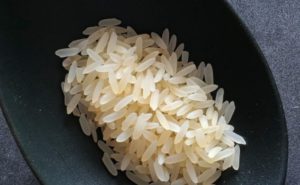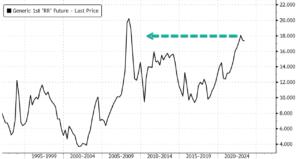Global Rice Shortage Looms, Set To Be the Biggest In Decades
Rice is the primary food source for over half of the global population, especially in emerging markets, where it plays a crucial role in feeding people. A new report reveals that rice production this year could be at its lowest in decades.

A report by Fitch Solutions forecasts this year’s global rice production will log its biggest shortfall in two decades. The deficit will be a major headache for countries relying on grain imports.
“At the global level, the most evident impact of the global rice deficit has been, and still is, decade-high rice prices,” Fitch Solutions’ commodities analyst Charles Hart told CNBC.
Sliding rice production in China, the US, and Europe is already causing grain prices to increase for 3.5 billion people, particularly in the Asia-Pacific region — this region of the world accounts for 90% of the world’s rice consumption.
“Given that rice is the staple food commodity across multiple markets in Asia, prices are a major determinant of food price inflation and food security, particularly for the poorest households,” Hart said.
Hart said this year’s global shortfall would be around 8.7 million tons, the largest global rice deficit since 2003/2004 of 18.6 million.
As a result of tightening global supplies, rough rice futures trading on the CBoT recently peaked at $18 per cwt, the highest level since September 2008. Cwt is a unit of measurement for certain commodities such as rice.

CNBC provides a breakdown of why rice supplies are strained:
“There’s a short supply of rice as a result of the ongoing war in Ukraine, as well as bad weather in rice-producing economies like China and Pakistan.
In the second half of last year, swaths of farmland in the world’s largest rice producer China were plagued by heavy summer monsoon rains and floods.
The accumulated rainfall in the country’s Guangxi and Guangdong province, China’s major hubs of rice production, was the second highest in at least 20 years, according to agriculture analytics company Gro Intelligence.
Similarly, Pakistan — which represents 7.6% of global rice trade — saw annual production plunge 31% year-on-year due to severe flooding last year, said the US Department of Agriculture (USDA), labeling the impact as ‘even worse than initially expected.’
The shortfall is partly due to result of ‘an annual deterioration in the Mainland Chinese harvest caused by intense heat and drought as well as the impact of severe flooding in Pakistan,’ Hart pointed out.
Rice is a vulnerable crop, and has the highest probability of simultaneous crop loss during an El Nino event, according to a scientific study.”
The takeaway is that a tight global rice market will raise food inflation for major rice importers such as Indonesia, the Philippines, Malaysia, and Africa. Elevated food inflation is dangerous for governments because it increases social instability risks.
yogaesoteric
June 17, 2023
Also available in:
 Français
Français
